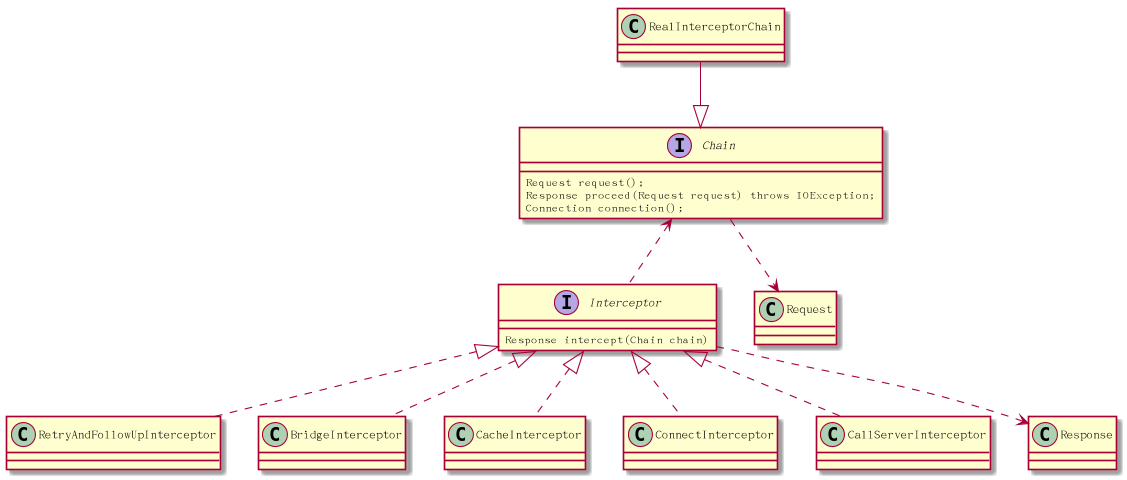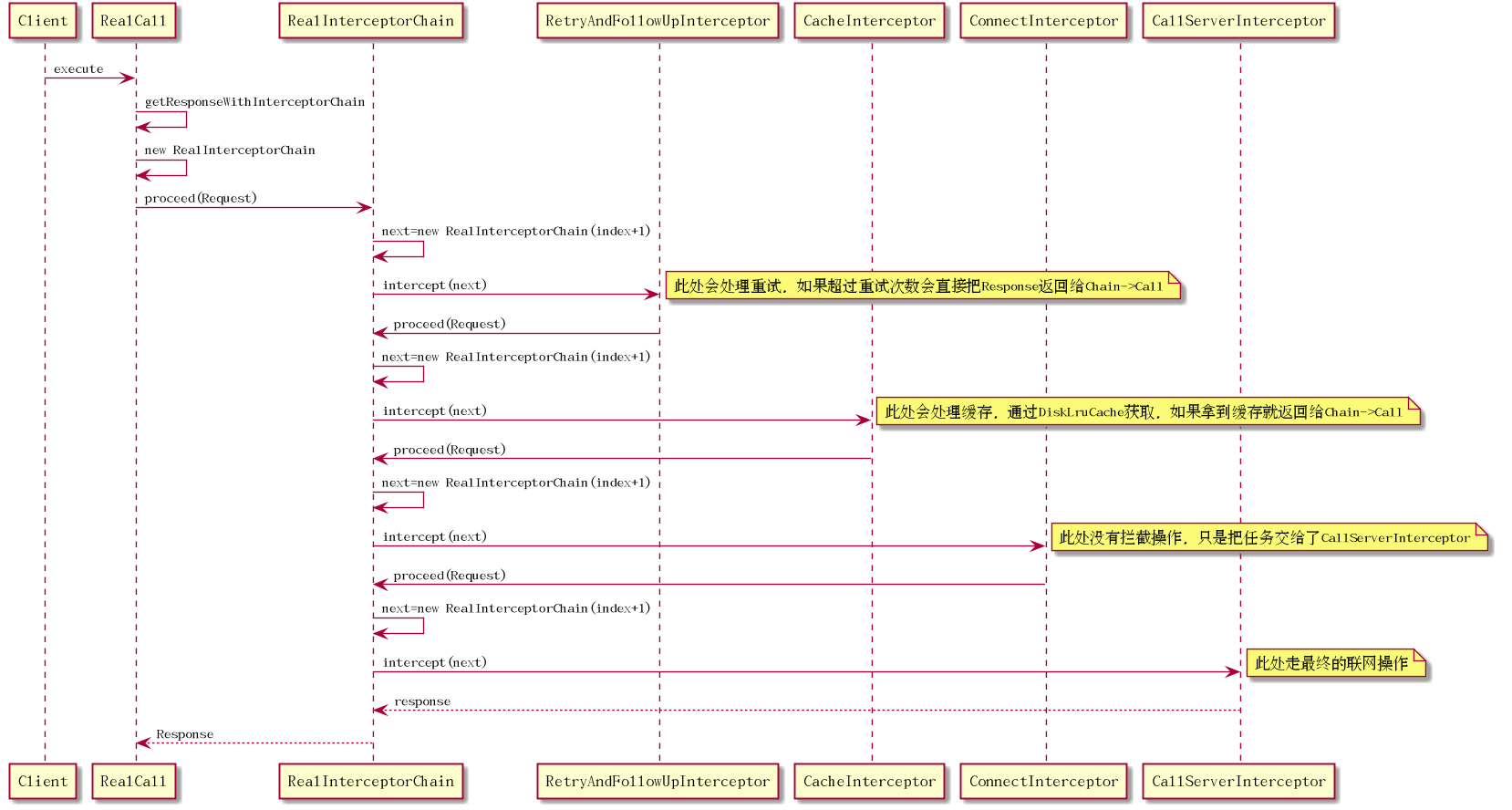OKhttp深入理解--责任链模式处理请求
本章重点讲解OKHttp通过责任链的方式处理请求。不了解责任链的同学可以学习一下责任链设计模式。
首先看一下类图

 RealCall调用execute会调到getResponseWithInterceptorChain方法
getResponseWithInterceptorChain方法里初始化责链
RealCall调用execute会调到getResponseWithInterceptorChain方法
getResponseWithInterceptorChain方法里初始化责链
Response getResponseWithInterceptorChain() throws IOException {
// Build a full stack of interceptors.
List<Interceptor> interceptors = new ArrayList<>();
interceptors.addAll(client.interceptors());
interceptors.add(retryAndFollowUpInterceptor);
interceptors.add(new BridgeInterceptor(client.cookieJar()));
interceptors.add(new CacheInterceptor(client.internalCache()));
interceptors.add(new ConnectInterceptor(client));
if (!forWebSocket) {
interceptors.addAll(client.networkInterceptors());
}
interceptors.add(new CallServerInterceptor(forWebSocket));
Interceptor.Chain chain = new RealInterceptorChain(
interceptors, null, null, null, 0, originalRequest);
return chain.proceed(originalRequest);
}
RealInterceptorChain的proceed方法,创建了新的任务链next(index+1),让第index个interceptor执行next任务。 假设index=0; 那么会让第0个interceptor执行new nextChain(Chain1),如果interceptor0没有拦截的话,它会调用Chain1的proceed。 Chain1里的index=1; 那么会让第1个interceptor执行new nextChain(Chain2),如果interceptor1没有拦截的话,它会调用Chain2的proceed。
...
责任连就这样一个一个传下去,如果某一个interceptor拦截了,或是到最后一个节点了,责任链停止。
public Response proceed(Request request,
StreamAllocation streamAllocation, HttpCodec httpCodec,
RealConnection connection) throws IOException {
//...ignore code
RealInterceptorChain next = new RealInterceptorChain(
interceptors, streamAllocation, httpCodec, connection, index + 1, request);
Interceptor interceptor = interceptors.get(index);
Response response = interceptor.intercept(next);
//...ignore code
return response;
}